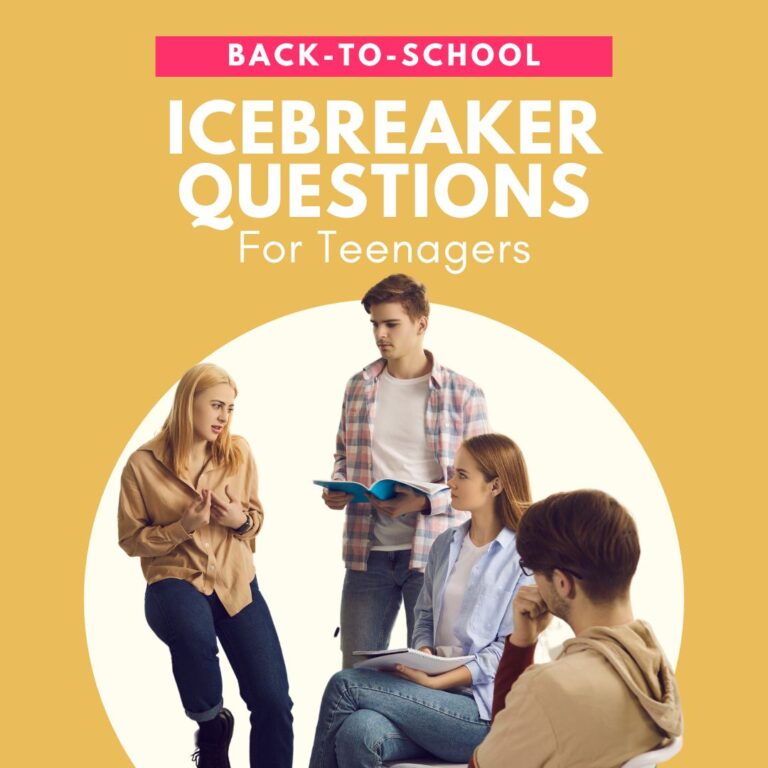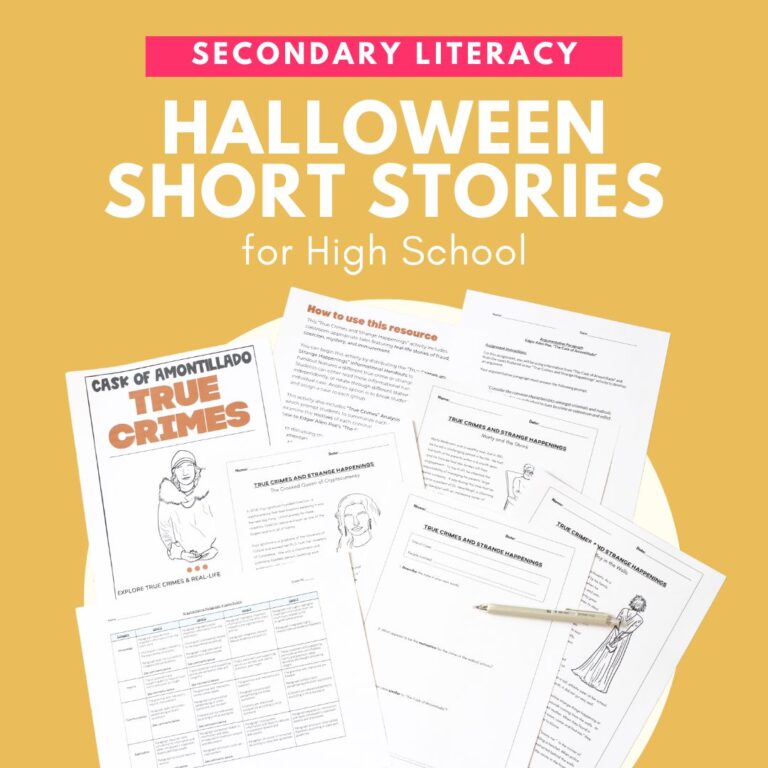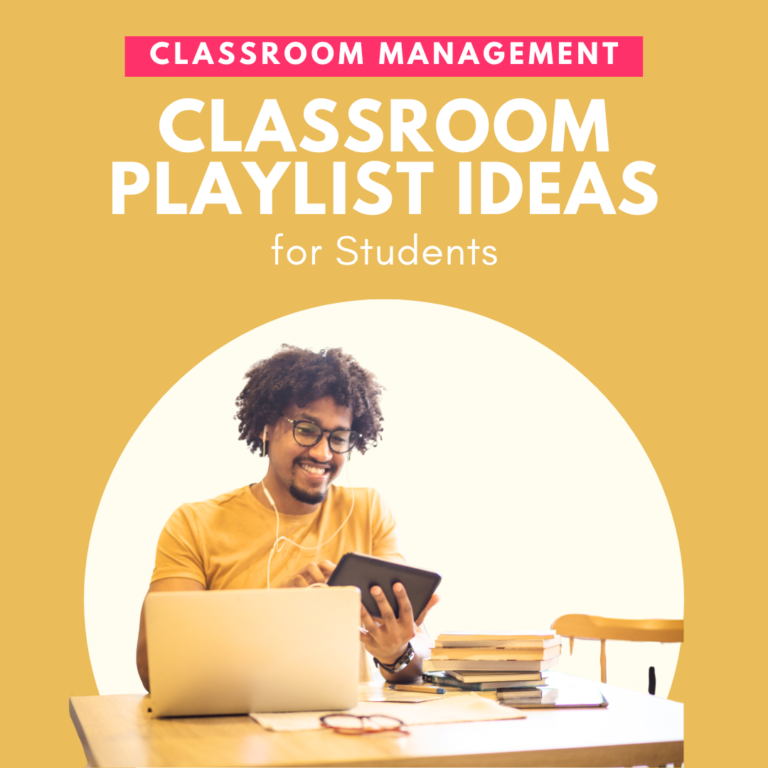If you teach high school English, you are probably familiar with a few classroom discussion strategies. Classroom discussions are a great opportunity for peer-based learning. Students also genuinely seem to enjoy them. If you host discussions often, you might run into some issues. For example, some students don’t participate, while others dominate. Some students come prepared, while others effectively “wing it.” Even with effective classroom discussion strategies, discussions digress into arguments.
Student Participation: Encouraging Quality Over Quantity
The Harkness Method, the Socratic Seminar, the Fishbowl Method – while they all have their benefits, they may also promote competitive behavior. This might not necessarily be an issue related to classroom management. This is because when students are evaluated on a conversation, it can seem logical for them to talk as much as possible. They might also get defensive when challenged, or want to avoid the discussion altogether.
This competitive nature made me wish for classroom discussion strategies that evaluated the quality and flow of a group discussion. These discussion strategies would need clear and concise discussion expectations, so I looked for strategies that offer qualitative and quantitative feedback. Thankfully, the perfect discussion strategies do exist! In this blog post, I’ll show you how to implement these strategies in your classroom.
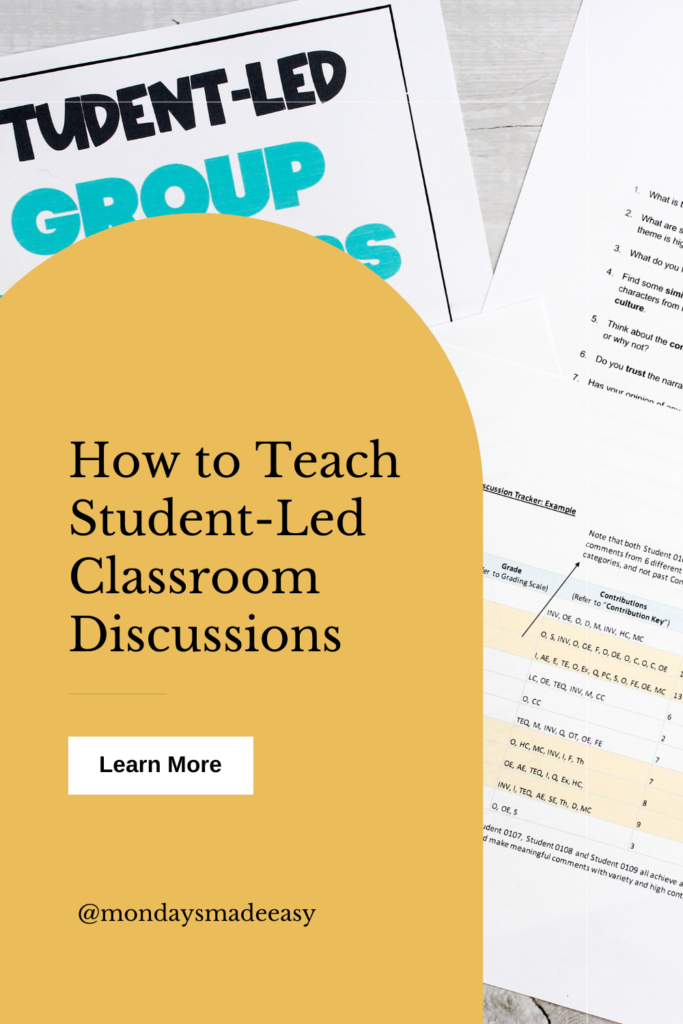
How Do You Lead a Good Class Discussion?
It’s easy to assume that the best way to lead a good class discussion is to involve yourself. This is not always the case! My favorite classroom discussion strategies are the ones that teach students to lead independently. I’ve noticed that the best leadership a teacher can offer is through modeling the types of questions and responses we’d like to see from students.
Think about the types of responses that characterize a great classroom discussion. In arts-based courses, these include connections to the text and to the outside world. For an in-depth discussion, opinions should also be supported with evidence. Ultimately, deeper learning is the goal of all classroom discussions, so we want students to make inquisitive comments that connect to larger themes.
Next, paint the picture of a more realistic classroom conversation. Comments might not always demonstrate higher-level thinking. They might include opinions without evidence, interruptions, off-topic comments, or even personal attacks. Without classroom discussion strategies, there might even be a lack of an attempt to involve others. Even though this is behavior we don’t want to encourage, it is still behavior we should teach our students about. This can help them to avoid it in a classroom discussion.
Step One: Use a Comment Key for Classroom Discussions
The best classroom discussion strategies set clear expectations for students. This is why I create a comment key for my classroom discussions. A comment key outlines both the types of responses we want to see in a group discussion, along with the types of responses we don’t want to see.
To do this, take notes as you brainstorm the characteristics of different classroom discussion strategies. Write down all of the desirable responses of a deep discussion, as well as all of the comments and behaviors that distract from one.
Now, group all of these responses together. You can group them based on common skills or characteristics. For example, connections to media, literature, history, and classroom lessons can be grouped together as “making connections.” Asking questions, paraphrasing someone’s idea, or inviting a classmate to speak can be grouped together as “managing conversation.” Unique theories, connections to larger themes, or insights inspired by quotations from the text can be grouped together as “thematic connections.”
After you’ve organized these responses in a way that makes sense to you, you can rank each category on a scale. This scale can be based on which types of comments are the most valuable to a conversation. For example, an opinion without evidence would not be as valuable as a comment that makes a thematic connection.
Step Two: Share Your Classroom Discussion Expectations with Students
Your students should know what types of comments are most valuable in a class discussion. To communicate this, create a graphic organizer of all of your brainstorming above. Your graphic organizer should communicate the different types of responses, what category they fall under, and the value of that category. I do this by assigning a level to each category.
You can also assign each comment a shortcode and write it down next to the comment. For example, an opinion can be short-coded as “O,” an opinion with evidence can be short-coded as “OE,” and an original theory could be short-coded as “OT,” etc. This is important information that you will use to provide feedback during and after classroom discussions.
You can refer to this graphic organizer as a comment key or contribution key. Share this key with your students and keep it with you during every classroom conversation. It might seem like a lot to understand at first, but after a few conversations, you and your students will know this comment key like the back of your hand.
Mondays Made Easy offers a contribution key with thirty types of responses organized into six categories. You can preview this resource in our Group Discussion Strategy Outline.
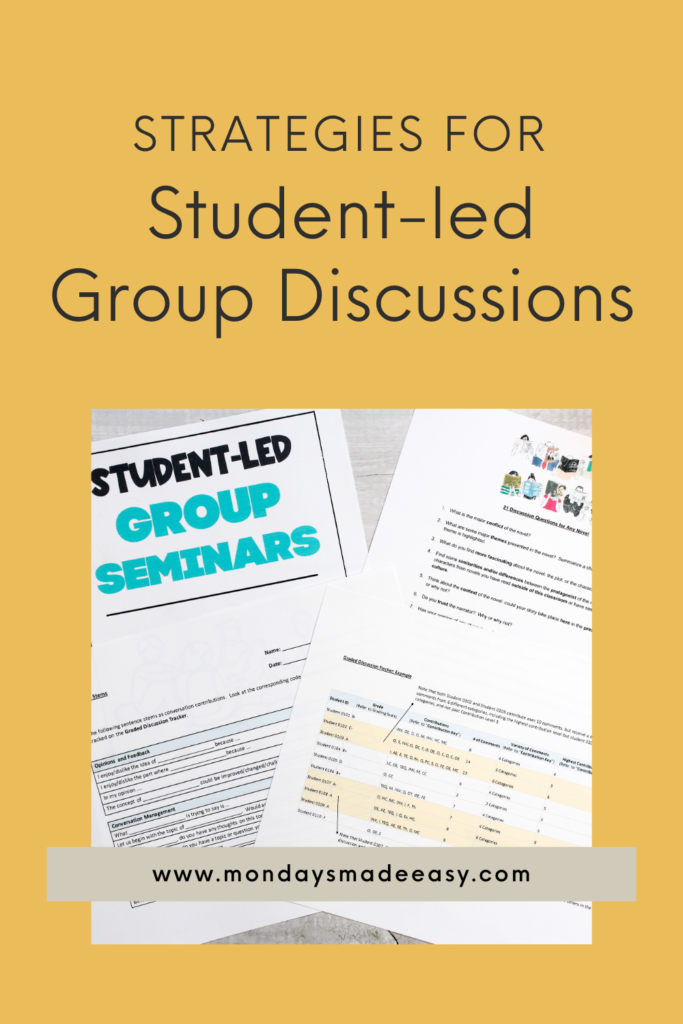
Step Three: Offering Meaningful Feedback
An important part of leading a classroom discussion is providing meaningful feedback. Students will know how best to participate in a group discussion if they are clear on expectations. That is why this strategy is highly centered on how to deliver qualitative and quantitative feedback to students.
The best way to do this is to set up a spreadsheet. Include a column with students’ names, along with a column to track their contributions to the discussion. You will do this by noting the shortcode for each comment that is made by each student. For more detailed feedback you can also include a column to note the number, variety, and highest level of comments made for each student. These are areas that you will evaluate after the discussion has taken place.
You can share this spreadsheet on an overhead projector and annotate it while you observe a student discussion. This allows students to see the grading process in action while they evaluate the discussion for themselves. This helps them understand exactly how they are contributing to the conversation.
When the discussion is complete, you can insert a column to note the grade for each student. Using the tracked data and a grading scale, determine the score of each student. For confidentiality, you may wish to avoid sharing the graded spreadsheet with all students; however, you can share the tracking spreadsheet with them. This can allow them to review the data after the discussion.
A blank discussion tracker and an annotated example of a complete discussion tracker are both included in Mondays Made Easy’s Class Discussion Strategy Outline resource. You can use these spreadsheets to track and evaluate group discussions in your classroom.

How Do You Make a Class Discussion Interesting?
To promote a deeper classroom discussion, you can challenge your students to think outside the box. For a while, I tried doing this by assigning discussion questions for my students. But this discussion strategy seemed too inorganic. I also didn’t feel as though I was preparing my students to lead deeper discussions independently.
Sentence stems are a great discussion strategy tool to foster deeper thinking. Sentence stems, also known as “sentence starters,” are simple yet meaningful statements that guide students towards participating in group discussions in a way that best supports their unique ideas, along with the ideas of others. More specifically, sentence stems can model how to respectfully challenge ideas, involve classmates, and articulate thoughts in ways that reflect the skills and learning goals of your classroom.
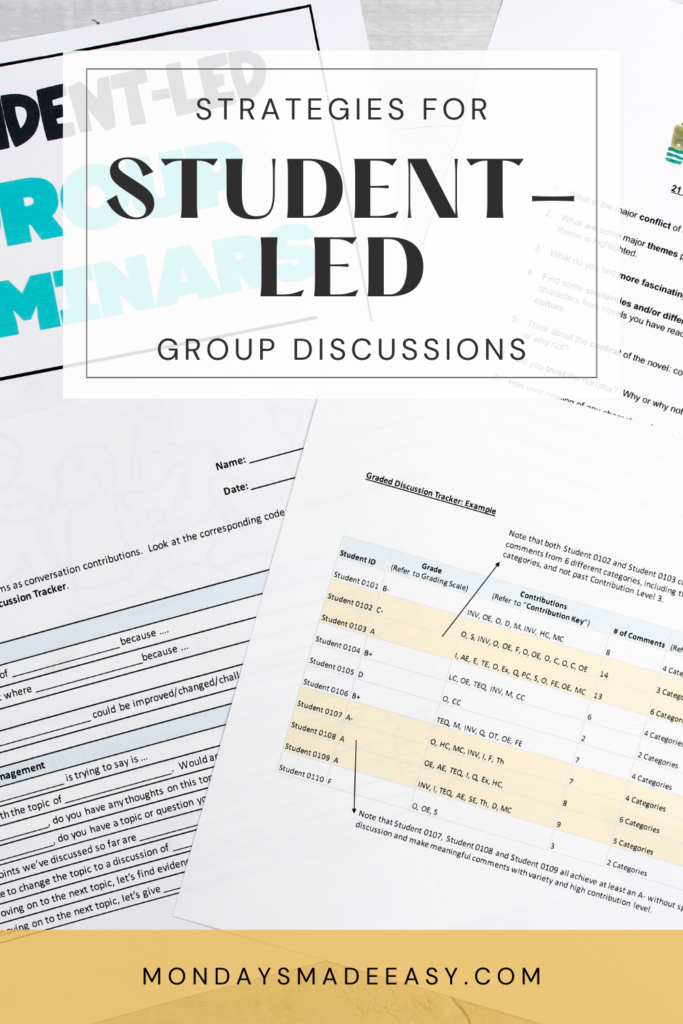
Here are some examples of sentence stems:
Sentence stems to promote opinions and feedback:
“I enjoy/dislike the idea of __________________ because …”
“The concept of ________________________ could be improved/challenged/changed because …”
Sentence stems for conversation management:
“What _____________________ is trying to say is…”
“Let us begin with the topic of __________________. Would anyone like to share their thoughts?”
Sentence stems for examinations, definintions, and clarifications:
“I don’t understand when _______________________. Can anyone clarify this?”
“I am interested in learning about ….”
“My theory is _________________ because ……”
Sentence stems are one of my favorite classroom discussion strategies for high school students. This is because they prompt students to think deeply while maintaining their independence in navigating an academic conversation. A complete list of over forty sentence starters is included in Mondays Made Easy’s Classroom Discussion Strategy Outline. You can use these sentence starters to spice up your next classroom conversation!
These Classroom Discussion Strategies in Action
To see how I implement these strategies, take a look at the video demonstration for Mondays Made Easy’s Group Discussion Outline below:
Classroom Discussion Strategies Made Easy
I hope these classroom discussion strategies are of use in your classroom! They have done wonders in supporting my students with participating and engaging in academic conversations. Outlines for all of the classroom discussion strategies in this blog post are provided in Mondays Made Easy’s Group Discussion Resource. This resource includes sentence starters, a contribution key, and spreadsheet templates for Google Sheets® and Microsoft Excel®.

